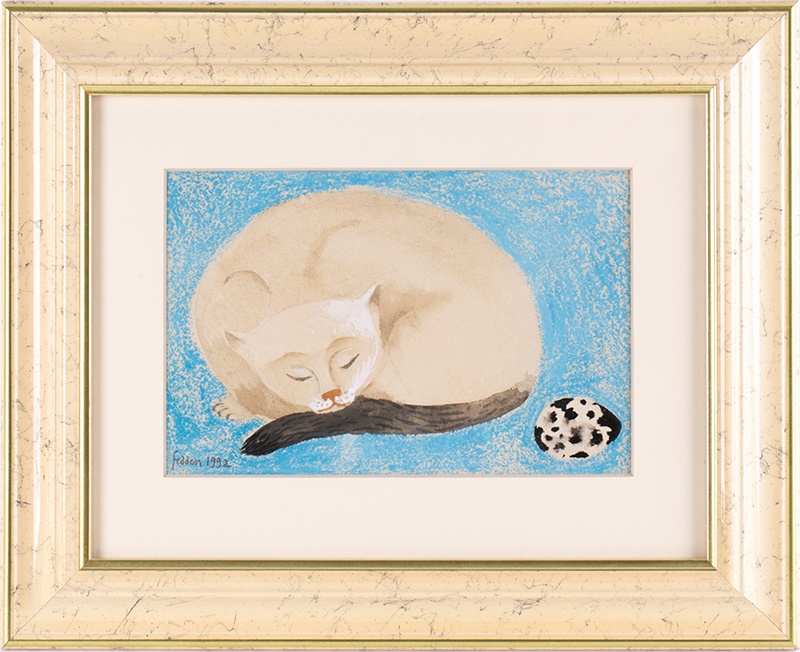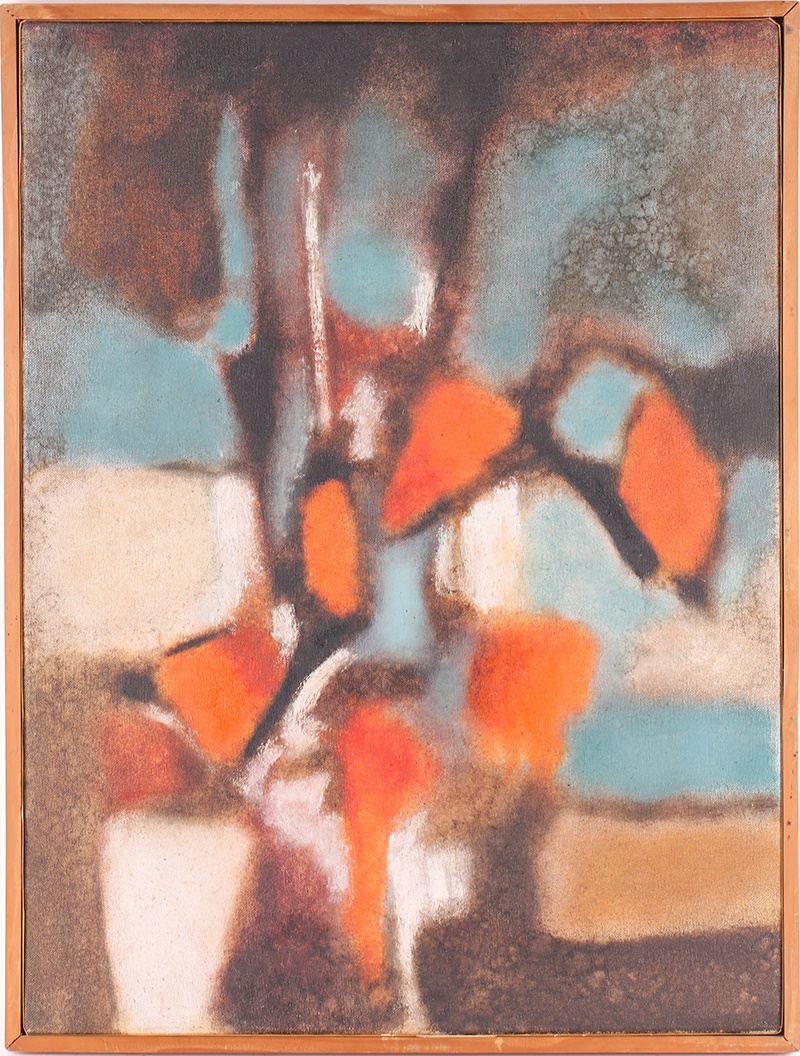Investing in Art
A Practical Guide for New Collectors
06/09/2023
For beginners looking to acquire art, whether it be for investment, or for decorative purposes, it can be overwhelming trying to ascertain where to start when navigating the world of art collecting. With the right knowledge and guidance, investing in art can be an extremely enjoyable, rewarding and potentially lucrative endeavour.
Identifying your goals is a good place to start. Do you intend to start collecting for the purposes of supporting the Art community or are you considering a new investment portfolio. Do you intend to purchase pieces to decorate your home or are you more interested in preserving a piece of history. Whatever your motivation, it is important to understand that collecting artworks is a very subjective process, and often results in accumulating pieces that represent an aspect of your own personality.
Mary Fedden OBE, RA, RWA (1915-2012), 'Cat & Egg'
Decide on an initial set budget so you know what you can afford. You don’t need to necessarily spend that entire budget in one go; indeed it is better to purchase two good quality pieces in a year rather than several lower quality works. As your collection grows, so will your understanding of art, and therefore your budget as you are able to buy with increased confidence.
It is essential to learn about the various types of artworks, mediums, and styles. Attend galleries, museums, art fairs, exhibitions, and auctions. Engage as many experts in the industry as you can, this will build a solid foundation of knowledge and appreciation for what is available. This will allow you to gradually identify what types and styles of artwork you find alluring and gravitate towards, whether it be abstract painting, prints, sculpture, or black and white photography. Instagram has become an invaluable resource to explore a variety of different artist’s works as well as communicating directly with the creators facilitating a good rapport.
One of the key considerations for new collectors is striking a balance between investment potential and personal aesthetic preferences. While some may prioritise the beauty and emotional connection to a piece of artwork, others may focus more on its potential value appreciation over time. It's important to note that the art market can be highly volatile and subject to fluctuations. Therefore, it is advisable for new collectors to approach their investments with a long-term perspective rather than expecting immediate returns. Make sure you are investing in something that you will appreciate and admire for the foreseeable future. A good approach is to always buy what you love and brings you joy.
If your primary focus is that of return on investment, you will have to consider mid-career or established artists which will be more expensive than up and coming. Dawsons recently offered a Joe Scarborough oil on canvas, which achieved £8,000.
Joe Scarborough (b. 1938), The Queen's Club Championships
For those with a more conservative budget, consider original limited-edition prints or works on paper by someone established such as Lowry, Banksy or Hirst. For example, Damien Hirst shark drawings command thousands of pounds at auction these days, largely due to the fact that he originally became famous for this subject.
If you are on a tight budget, keep a close eye on graduates from major art schools such as The Royal College of Art, Slade School of Fine Art, Camberwell College, Central Saint Martins and the RA Schools. It is possible that in the near future these artists could potentially be represented by a commercial gallery and their pieces may increase in value quite dramatically.
In recent years, Caribbean art has been gaining attention globally. Artists from this region bring unique perspectives and cultural influences into their work. Collecting Caribbean art not only allows you to diversify your collection but also supports previously underrepresented artists who deserve recognition. Aubrey Williams, a member of the Caribbean Artists Movement (CAM), is one such artist whose works are gaining momentum. Last year Dawsons brought the hammer down on one of his abstract oils for £4,400.
Aubrey Williams (1926-1990) Guyanese, 'Arawak'
Ultimately, investing in art requires careful research, understanding of market trends, and personal passion for the artworks you choose. By combining these elements with patience and an open mind towards different genres and artists, new collectors can embark on an exciting journey into the world of art investment.
read more
Are Paintings a Good Investment?
How Can You Tell if a Painting is Rare?
Do you have any valuable art that you are considering selling?
Streaming our sales live to over 10 million active bidders, Dawsons reach a global audience.
We would be delighted to help you achieve the best price for your artwork:


